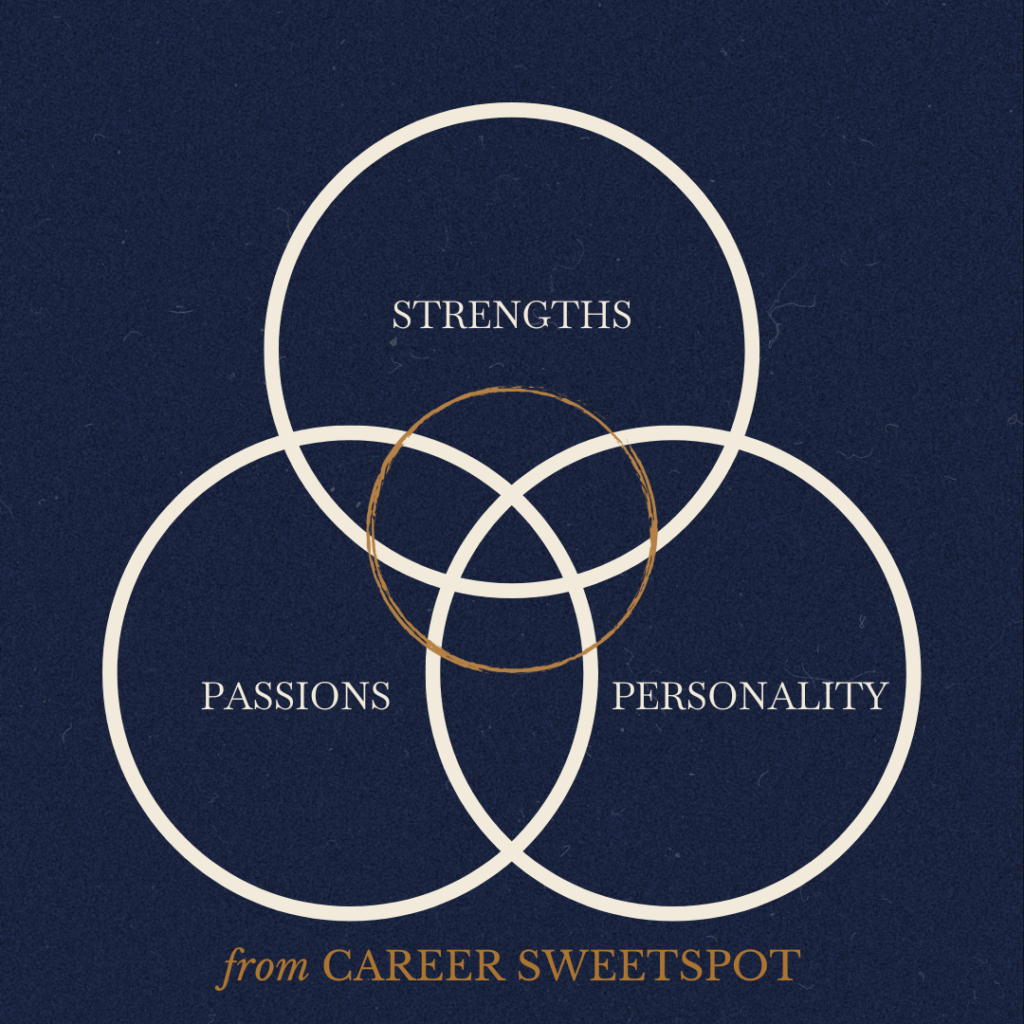Have you experienced what I call, the “career maze?”
Allow me to explain.
In school, you were likely told what to do and what it took to succeed. You were guided along a path and told what classes to take next. But then you got out into the real world, and there were no instructions.
No guidance, no path.
Some people realize this when they’re 20, some at 60, and some never do. It’s an inflection point – a transition – when things shift and the rules change.
What No One is Telling You (about owning your career path)
This is a reality for many people. And the problem is, many of us were never told about this transition. No one signaled the change or told us to shift our thinking. And there definitely wasn’t a ceremony marking the change!
Think about it: a wedding marks a transition. A graduation marks a transition. We have these ceremonies to help us step into a new phase of life and a new way of being.
But the transition from a clear, mapped-out path to owning your career and your life direction is minimal to non-existent.
For most, we’ve followed a career path maze for years. Taking opportunities as they came along. Doing what others pointed us toward. All good and fine things. But there’s a season for being guided, and a season for owning your direction.
And one day, you wake up thinking, “How did I get here? Am I really doing what I want to do? What I’m meant to do?”
You start to realize that it’s time to move from taking whatever you can get to owning your life and career.

Career Coaching to Find the Right Career
This is where a defined process and a Career Coach can help, because it’s hard to see yourself clearly and figure out what’s next. It’s difficult to know what you’re good at, what you enjoy, and how to translate it into a career path.
Personality assessments are great, but you’re still left wondering how to translate the results into your work. Which is why you need a process to clarify your purpose and turn it into a plan.
I created the Career Sweetspot process out of my own search for career-purpose, and now after seeing hundreds of people use it to step into work-life they love and that fits them, I’m confident it works. The Career Sweetspot process is the foundation of the Greenhouse Method and has 5 simple steps:
- What you played as a kid
- Your ‘WHAT’
- Your ‘WHERE’
- Your ‘WHY’
- Curious conversations
Take this quiz to learn which step you’re at in the Greenhouse Method.
The Career Sweetspot Process for Finding the Right Career
1. What you played as a kid
Instead of hypothetical pondering that leaves you stuck and endlessly circling around, the Career Sweetspot process is based on simple facts. Specifically, your own past experiences.
The trick is, you have to go all the way back to what you played as a kid. Many of our adult work or life experiences are tainted with labels others have given us or the roles we’ve already worked in. We bury what we truly want and do something practical instead. So looking back on your natural tendencies as a kid gives incredible clues to what you’re meant to do as an adult.
But this doesn’t mean that the things you played are explicitly equal to your career path. Just because I played with Legos doesn’t mean I should be a professional Lego builder.
I mean… maybe, but unlikely.
You have to go a layer deeper, and there’s a specific way to do this, which I walk through in more detail in the Career Sweetspot course.

2-4. Your WHAT, WHERE, and WHY
After identifying what you played as a kid, you draw from those experiences to answer the three elements that make up your Career Sweetspot.
Your ‘WHAT’ – the things you’re good at and love to do – the basic skills and activities you enjoy doing, no matter what the role or job.
Your ‘WHERE’ – the settings and environments/culture you thrive in and do your best work.
Your ‘WHY’ – stems from the problem you want to solve, or the end outcome/impact you want to see in the world.
Again, these things are not hypothetical questions – they come directly from your past experiences. Facts. You just need a step-by-step process for how to pull the insights out and put them together into a purpose statement.
5. Curious Conversations
Once you have your WHAT, WHERE, and WHY, you put them together – MadLib-style – into a written summary paragraph. It’s essentially a draft purpose statement, and now you have what you need to figure out what’s next in your career and life!
Now… you might think at this point, you just need to go out and try really hard to find a career that fits your purpose statement. Well, here’s the major twist in the plot.
You don’t have to do any of that!
The old way of figuring out what’s next doesn’t work anymore. Instead of resumes and searching, you let conversations do the heavy lifting. You let others do the hard part by simply sharing your purpose statement and letting them guide you.
People love helping people. So as you share what you’re looking to do more of, they will happily make connections and share ideas that will start to attract the right opportunity to your doorstep. It seems backwards, but I’ve seen it time and again – like the six degrees of separation kind-of-thing.
How to Use the Career Sweetspot Process to Find the Perfect Career
Following these steps is almost guaranteed to bring results and greater fulfillment. Instead of operating at a fraction of yourself, you could be at your best, using your unique abilities to make a difference. But the reality is, it’s difficult to do by yourself.
So if you feel like you’re starting to hit a wall working through this, think about grabbing a session or two with a Career Coach to show you where to start and what to do for the next few weeks. And as you work through the 5 steps outlined above, you will quickly find new clarity and finally make progress because the steps are on your calendar – and if you want, you’re talking to a professional Career Coach along the way.
Either way, you’ll know where to start, and you’ll have the simple steps to figure out what’s next to stepping into greater career fulfillment.
Leave a Note
Comments